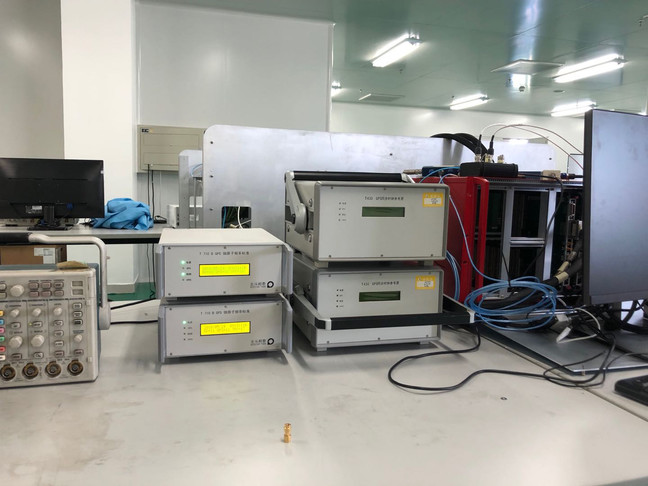BeiDou clock for the electronic institute of national key model development project supporting
BeiDou clock for the electronic institute of national key model development project supporting
Professional time and frequency equipment supplier Beidou Bontai, according to the project demand through the digital phase-locking technology synthesized the long-term stability of GPS Beidou, rubidium atomic clock low aging characteristics and constant temperature crystal oscillator high short stability and low phase noise characteristics, innovated a low phase noise high-precision rubidium frequency standard with long and short stability and good, high accuracy. Output ultra-low phase noise 90MHz, 100MHz frequency signal.

Detailed description
The Institute of Electronics of the Chinese Academy of Sciences (hereinafter referred to as IEE), founded in 1956, is China's first comprehensive electronics and information science research institute, which is mainly engaged in applied basic research and high-technology innovation research in the field of electronics and information science and technology, and has formed three major pillars and five key areas. The three pillars are microwave imaging technology, microwave electro-vacuum technology and geospatial information technology, and the five key areas are microwave imaging basic research, electromagnetic detection technology, sensor and microsystem technology, advanced laser and detection technology and programmable chip technology. The Institute has 11 research departments, including State Key Laboratory of Microwave Imaging Technology, State Key Laboratory of Sensing Technology (North Base), State Key Laboratory of High Power Microwave Source and Technology, State Key Laboratory of Electromagnetic Radiation and Detection Technology, State Key Laboratory of Spatial Information and Applied System Technology (Laboratory of Geographic and Cyberspace Information Technology, and Laboratory of Information Processing and Image Analysis), Space Traveling Wave Tube Research and Development Center, High Power Gas Laser Technology Department, Aerospace Microwave Remote Sensing System Department, Aerospace Microwave Remote Sensing System Department, Microwave Microsystems R&D Department. The Suzhou Research Institute of the Institute of Electronics consists of two research laboratories, namely the Geospatial Information System Research Laboratory and the Spatial Information Intelligent Processing System Research Laboratory.
T710-GRO GPS Rubidium Atomic Clock Constant Temperature Crystal Oscillator Frequency Standard is mainly composed of high-precision timing GPS receiver, high-performance Rubidium Atomic Clock, low-phase noise phase-locked crystal oscillator, control module, and low-noise amplifier module. Through the digital phase-locking technology, it integrates the long-term stability of GPS, the low aging characteristics of rubidium atomic clock and the high and short stability and low phase noise characteristics of constant temperature crystal oscillator, and innovates a kind of low-phase-noise and high-precision atomic frequency standard with both short and long stability and high accuracy. Under the GPS lock state, the 10MHz frequency stability can reach the performance of ordinary cesium clocks, with high cost-effective.
T710-GRO GPS Rubidium Atomic Clock Constant Temperature Crystal Frequency Standard Output 1PPS Signal is obtained by frequency division of Rubidium Atomic Clock Frequency Signal, and synchronized with the UTC time output from GPS, compared with the original second pulse of GPS, the frequency division pulse is smoothed, overcoming the impact of the fluctuation of the original pulse and the effect of jumping, it is a replication of the UTC time base. When the GPS signal is lost or abnormal, the device can recognize it intelligently and automatically switch to Rubidium atomic clock timekeeping mode to continuously provide highly stable time and frequency signals.
T710-GRO device adopts 3U chassis design, which can output 10MHz, 1PPS and TOD information (option supports multiple 90MHz, 100MHz, 5MHz, 1PPS output). It can be widely used in radar, communication, measurement and calibration, electric power, electronic countermeasures, aerospace measurement and control and other fields.
